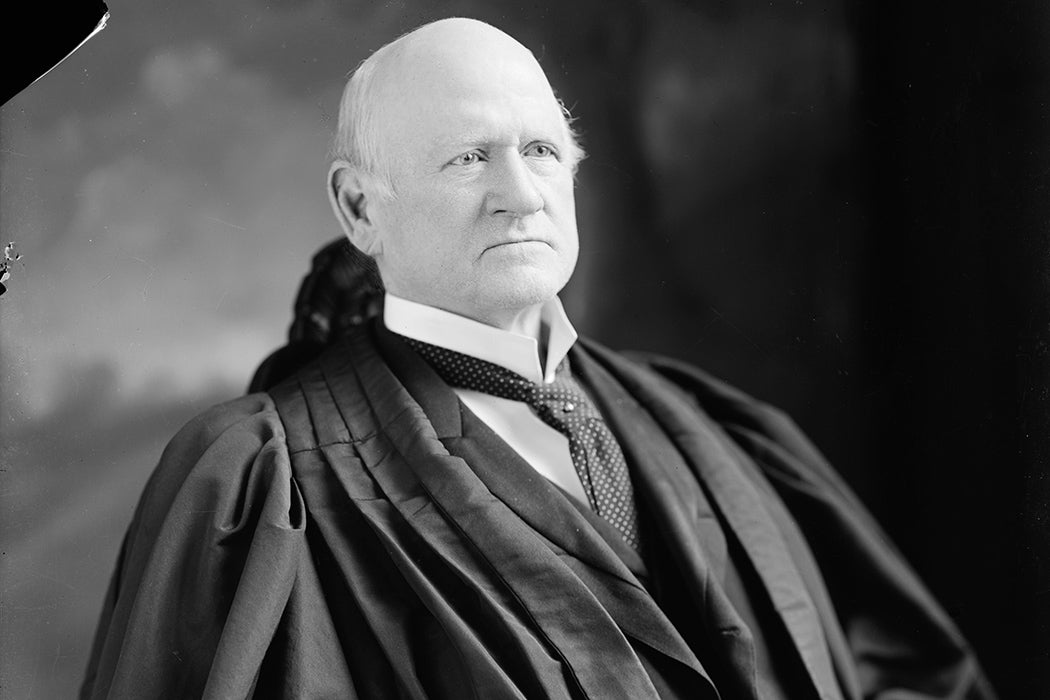Who were Melville Fuller, Stephen J. Field, Horace Gray, Henry B. Brown, George Shiras, Jr., Edward D. White, and Rufus W. Peckham? The names may not be very familiar today, but in 1896, they were the Supreme Court justices who ruled 7–1 in the case of Plessy v. Ferguson (Justice David J. Brewer didn’t hear the arguments in Plessy and so did not participate in the decision). In that notorious decision, Associate Justice Brown wrote the majority opinion that ruled that racial segregation did not violate the Constitution as long as there were “separate but equal” facilities.
There never were separate but equal facilities in transportation, education, accommodations, etc., but the fateful decision of those unremembered men would stand for more than half a century, condemning millions to second-class citizenship because of the color of their skin.
“In my opinion, the judgment this day rendered will, in time, prove to be quite as pernicious as the decision by this tribunal in the Dred Scott case,” wrote Justice John Marshall Harlan (1833–1911) in his Plessy dissent. “The thin disguise of ‘equal’ accommodations for passengers in railroad coaches will not mislead anyone, nor atone for the wrong this day done.”
Here as in other cases during his long tenure on the Supreme Court (1877–1911), Harlan would be a lonely voice. Named after John Marshall, the fourth Chief Justice, Harlan is often referred to as John Marshall Harlan I to distinguish him from his grandson, John Marshall Harlan II (1899–1971), who also served on the Supreme Court. The first Harlan was largely forgotten after his death; it was only in the second half of the twentieth century that he became known as the “Great Dissenter,” a premonition of things to come. In 1954, the Supreme Court unanimously ruled in Brown v. Board of Education that the “separate but equal” doctrine was unconstitutional.
In his Plessy dissent, Harlan also famously wrote: “There is no caste here. Our Constitution is color-blind and neither knows nor tolerates classes among citizens.” That seems pretty straightforward, but leftists, liberals, and conservatives have championed different interpretations of just what Harlan meant by “color-blind.” (Both sides in the legal struggle over affirmative action quote Harlan.) For just as laws are interpreted by Supreme Court justices, so are SCOTUS justices’ decisions themselves interpreted by history.
Scholar Philip Hutchison is one of those critical voices who dissents from the mainstream reading of Harlan’s dissent. Noting what usually isn’t quoted in Harlan’s dissent—Harlan’s conviction that the “white race” will be the “dominant” race “in prestige, in achievements, in education, in wealth, and in power” “for all time”—Hutchison writes that Harlan’s
clarion call for the equality of [B]lacks and whites before the law stands in palpable contradistinction to his discourse on equality in the social realm; while he considered legal racial subordination anathema, the social inferiority of blacks registered nary a protest from him.
Harlan believed that legal Jim Crow discrimination would be a domestic and international disaster. He thought it would lead to racial hatred and violence, like the kind of white terrorism he had personally witnessed in Kentucky in the years after the Civil War. He also believed a color-blind constitution stood as a bulwark of white supremacy.
Weekly Newsletter
For Harlan, Hutchinson argues, white supremacy didn’t need legal segregation because the two races were not, and never would be, social equals. As Hutchison writes, “The vastly greater resources whites controlled were in no danger in a society of integrated railroad cars.” Legally equal citizenship, Harlan believed, would prove no threat to power. The Constitution worked just fine to “preserve socioeconomic racial inequality.”
Harlan was on the powerful end of that inequality all his life. His life depended on it: he was child of a slave-owning Kentucky family, raised by an enslaved nanny. When his father died in 1863, he and wife Malvina took over the destinies of eight of the family’s enslaved people. The Thirteenth Amendment meant the Harlans weren’t slave-owners for long, but after the war the household continued to depend on Black servants. A master-slave relationship transitioned into a master-servant dynamic, for which, Harlan believed, no special laws were necessary.







